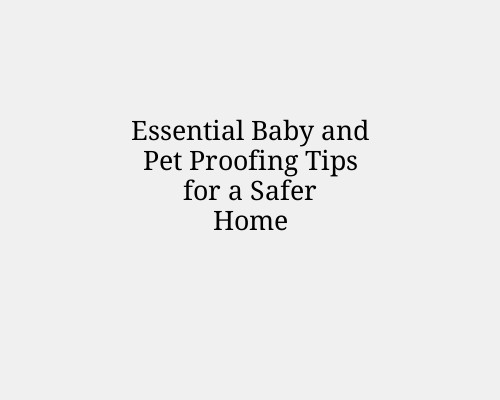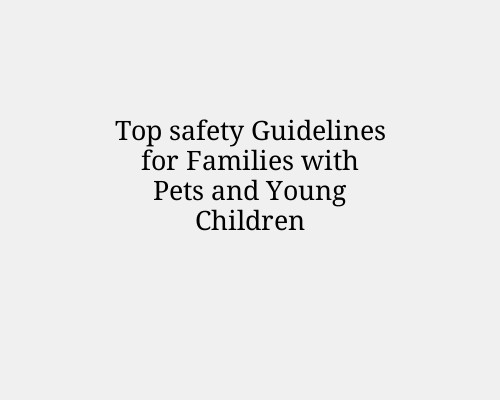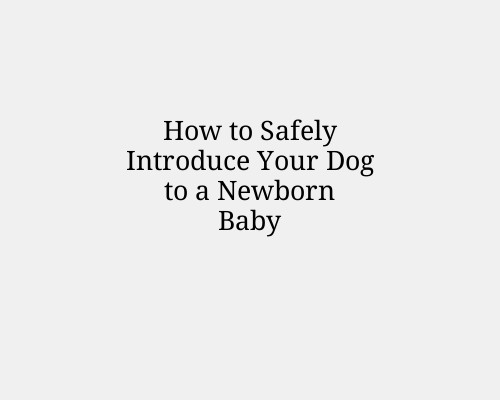
The Best Age to Introduce Children to Household Pets
Introducing a household pet into a family with young children is a significant decision that affects everyone in the home. While pets can be wonderful companions who teach children responsibility, empathy, and care, the success of this relationship largely depends on the child’s developmental stage, maturity, and the type of pet involved. Choosing the best time to bring a pet into a child’s life requires balancing the needs of the child with the welfare of the animal.
Understanding Child Development and Pet Ownership
Children grow rapidly through various stages of physical, cognitive, and emotional development. Each of these stages determines how well they can interact with and care for a pet:
0–2 Years: Infants and Toddlers
This is generally not the ideal time to introduce a pet into the household with the child in mind as the primary companion. Infants and toddlers are naturally curious and may unintentionally hurt animals by pulling ears or tails, poking, or grabbing. Their mobility is limited, communication is just developing, and they lack an understanding of boundaries or consequences.
While many families already have pets when a baby is born, it’s critical to supervise all interactions closely. Animals can become stressed or defensive around unpredictable toddlers. If a pet is introduced during this stage, it should be chosen more for the family than the child.
3–5 Years: Preschool Age
Children between three and five years old are more aware of their environment and begin to understand rules. They can start learning basic empathy, but impulse control is still weak. At this age, pets can be introduced with careful adult supervision and daily guidance.
Small, low-maintenance pets such as fish, small caged animals (like hamsters or guinea pigs), or calm older dogs or cats can work well. However, preschoolers are not ready for full responsibility. They may help with feeding or cleaning under supervision, but the adult will still need to manage most of the care.
6–8 Years: Early School Age
This age range is generally considered a good time to introduce a pet, especially if the child has shown a genuine interest in animals. Children begin to grasp the concept of responsibility and can follow basic care instructions. They can participate more meaningfully in daily pet care, like feeding, brushing, and even helping with walking or training (if it's a dog).
Animals suited for this age group include:
Cats – low-maintenance and independent, but still affectionate.
Dogs – best if they are calm, patient breeds and well-trained.
Small mammals – like rabbits, guinea pigs, or rats.
Reptiles – with proper supervision and hygiene, reptiles can be fascinating and educational pets.
Parents should assess a child’s temperament, consistency, and ability to follow directions before bringing home a pet. Even at this age, pets are still the parents’ responsibility, with the child assisting and learning.
9–12 Years: Late Childhood
This is typically the ideal time to introduce a pet if your goal is to instill a sense of responsibility and emotional bonding. Most children in this age group have developed:
Better motor skills (handling pets more gently),
Stronger cognitive abilities (understanding pet behavior),
More emotional maturity (empathy and attachment).
At this stage, kids can take a more active role in feeding, cleaning, and even training pets. They are also more capable of understanding the commitment and time involved.
Pets such as dogs, cats, birds, reptiles, and rabbits are all suitable, depending on the child’s interests and the family’s lifestyle. However, adult supervision and support are still necessary to ensure the pet’s needs are fully met.
13+ Years: Teenagers
Teenagers are capable of taking on significant responsibility when it comes to pet care, especially if they’ve had experience growing up with pets. They may even take on full care duties, including scheduling vet appointments, training, and managing feeding and hygiene routines.
However, teens also tend to have busy social and academic lives, so it’s not uncommon for interest in pet care to wane. Parents should still provide oversight and ensure the commitment is long-term, especially since pets introduced during this time may live well beyond the teen years.
Choosing the Right Pet for the Right Age
Choosing the right type of pet for your child’s age and maturity is as important as the timing. Consider the following guidelines:
Age Group
Ideal Pets
Notes
0–2 years
Family-owned calm pets (dog/cat), fish
Not for child interaction; supervision required
3–5 years
Fish, guinea pigs, small caged animals
Interaction okay with adult guidance
6–8 years
Cats, calm dogs, rabbits, hamsters
Introduce care duties; adult still manages
9–12
years
Most common pets, including reptiles
Can begin responsible pet ownership habits
Age Group
Ideal Pets
Notes
13+ years
Any pet suitable to family lifestyle
Teen may take more responsibility, but not always consistent
Teaching Kids to Respect Pets
No matter the age, children must be taught how to treat pets respectfully and humanely. This includes:
Not disturbing pets while eating or sleeping.
Gentle handling (no pulling, hitting, or teasing).
Understanding pet body language and signs of distress.
Regular handwashing after handling animals, especially reptiles or small mammals.
Parent Responsibilities
While the goal may be to teach children responsibility, the adult is ultimately accountable for the pet’s welfare. This includes ensuring regular feeding, vet visits, exercise, hygiene, and safety. Children’s involvement should increase over time, but ownership starts with the parents.
Additionally, assess your household dynamics before introducing a pet. Consider allergies, space, travel plans, finances, and long-term commitment. Pets are not temporary lessons—they are living beings who depend on humans for care, often for a decade or more.
Conclusion
The best age to introduce children to household pets is between 6 and 12 years old, when children are mature enough to begin understanding responsibility but still young enough to form deep emotional bonds. That said, many families successfully raise pets alongside toddlers or teens, provided there is adequate adult supervision and commitment.
Ultimately, it’s not just about the child’s age—it’s about choosing the right pet, teaching proper care, and maintaining consistent, compassionate oversight. A thoughtful introduction can set the foundation for a lifelong love and respect for animals.


